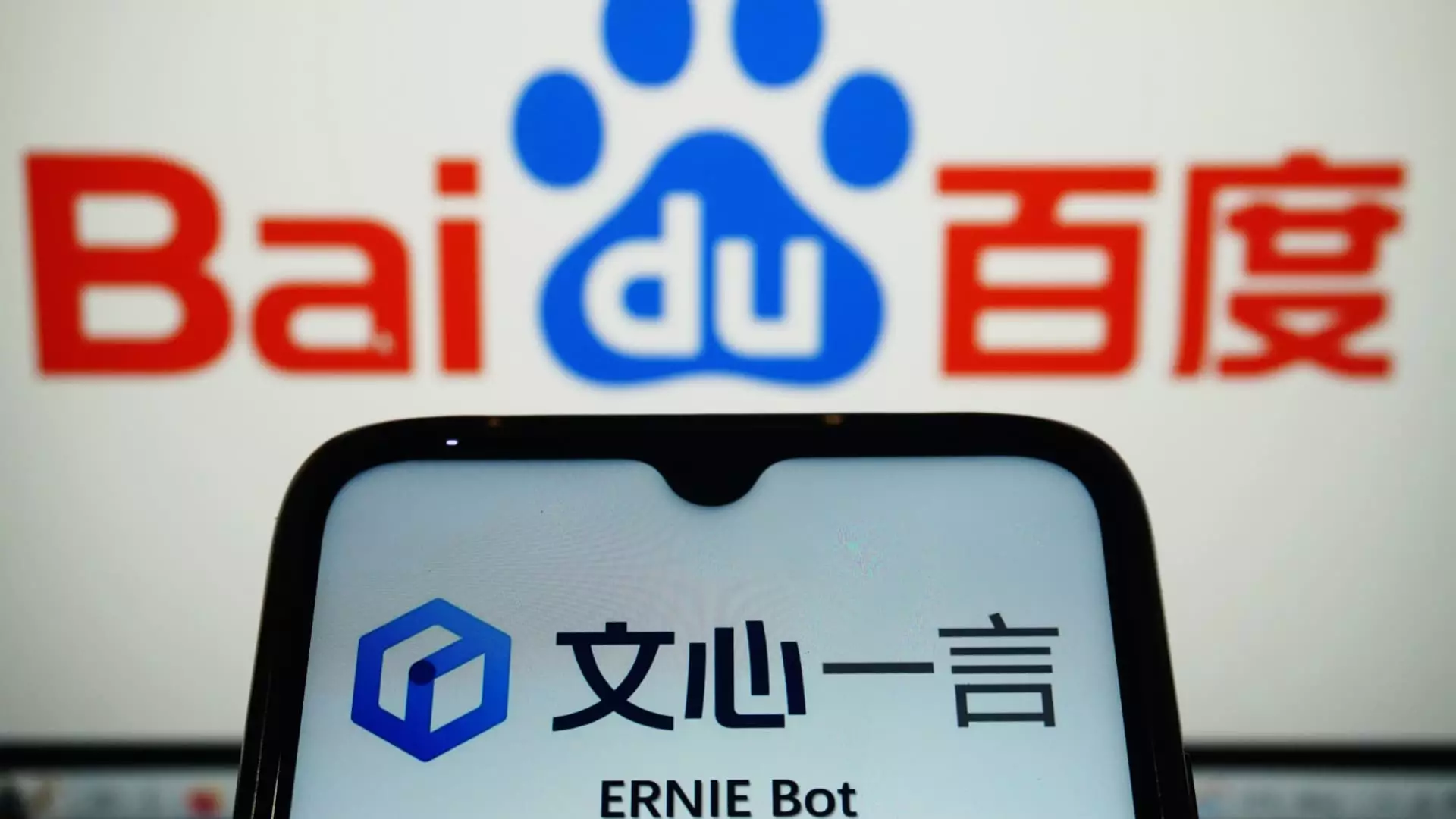On a bright Tuesday morning in Asia, Baidu—a name synonymous with Chinese innovation—saw its stock soar by a remarkable 10.7%. Such a leap did not occur merely by chance; it was a strategic response to the unveiling of two groundbreaking AI models over the weekend. The tech giant revealed a refined iteration of its foundational “Ernie” model alongside a brand-new reasoning model aimed squarely at overturning the dominance of rival company DeepSeek’s R1. While data authenticity remains debatable, the competitive implications are undeniable.
Baidu finds itself in a precarious balancing act between ambition and ability as it attempts to reclaim its throne in China’s hyper-competitive AI landscape. The release of these models signals Baidu’s intention to shake off the stagnation that has plagued its stock performance, especially in a sector where fresh, compelling innovations dictate market momentum. The marginal gains against competitors like DeepSeek, which have quickly risen to notoriety, illustrate the critical need for Baidu to not just keep pace, but to lead the charge in AI technology.
The Importance of Reasoning Models
What’s truly fascinating is the introduction of reasoning models designed to emulate human cognition by dissecting complex problems. Unlike merely regurgitating information or providing straightforward responses, these models promise a sophisticated approach: parsing prompts into digestible components and exploring varied methodologies before generating a reply. This nuanced functionality could revolutionize how enterprises engage with AI, positioning Baidu in a lucrative dilemma; users demand intelligent responses, but only time will tell if Baidu’s claims about outperforming DeepSeek’s R1 are legitimate.
Kai Wang’s perspective as a senior equity analyst at Morningstar suggests that the stock’s surge might simply be a belated reaction to new releases. Yet the rise looks far more like a corporate awakening. Baidu, historically viewed as an underappreciated player compared to massive “hyperscalers” entrenched in the cloud computing sphere, is looking to capitalize on the surging enterprise demand for robust AI capabilities.
Price Wars and Performance Promises
In the face of advancing rival technology, Baidu is not only touting superior performance but also enticing consumers with cost advantages. The assertion that Baidu’s ERNIE X1 model matches DeepSeek’s performance at half the price is crucial. However, skepticism looms large; the AI market operates in a quicksilver environment where pricing and performance can fluctuate dramatically overnight. The real challenge lies in whether Baidu can deliver on their lofty promises, especially when their competitors have scooped up market share in a matter of months, leveraging lower costs and less powerful chips.
What’s more, (and this is where it becomes intriguing), Baidu’s pivot towards open-sourcing signals a paradigm shift from their traditional approach of tightly guarding proprietary technology. This decision aims to not only distill innovation through community collaboration but also to firmly established Baidu as a cornerstone in the AI ecosystem. With traditional hierarchies of control increasingly giving way to a more collective approach to technological advancement, will Baidu’s decision pay off in the long run, or will it dampen their own competitive edge?
Building an Ecosystem, Not Just a Product
The concept of open-sourcing should not merely be seen as a strategy for immediate gain but rather as a long-term investment in the AI community itself. Expanding market share requires not just the product but a vibrant ecosystem conducive to growth and innovation. By yielding access to source code and fostering collaboration, Baidu is aligning itself with developers who can not only modify and improve upon their models but also populate their technology into more applications than Baidu alone could ever envision.
These developments raise an essential question: In which direction are the Chinese tech giants—like Alibaba and Bytedance—heading, and how will they interact with Baidu’s newfound tactics? The race for supremacy in AI is no longer a solo run; all eyes will be on how alliances and rivalries shape this progressively intricate narrative. Here lies the crux of Baidu’s journey; will it emerge unscathed as a catalyst for change, or will it drown in the complexities of a rapidly evolving digital economy? Only time will reveal the outcomes of these bold moves.

